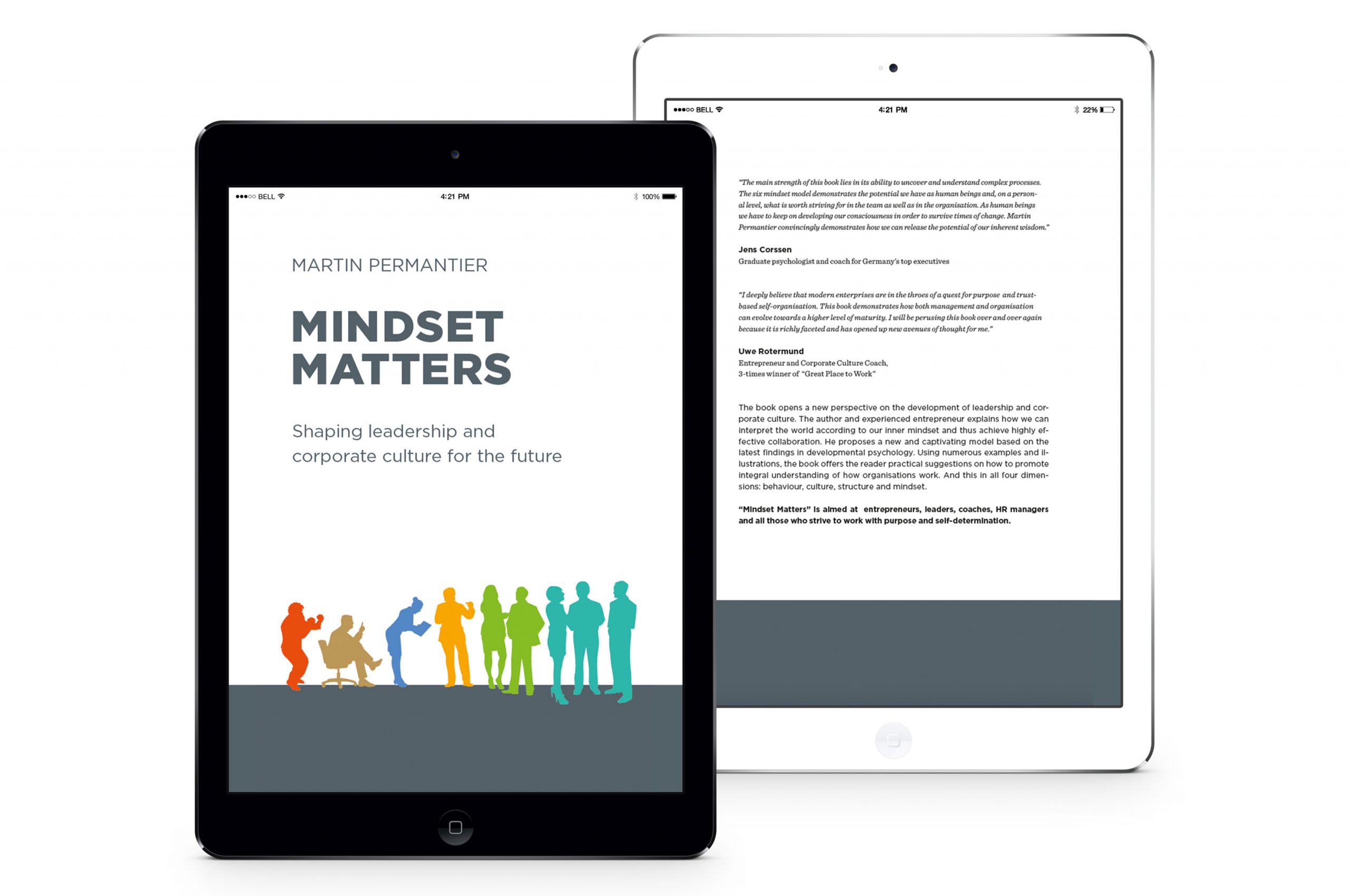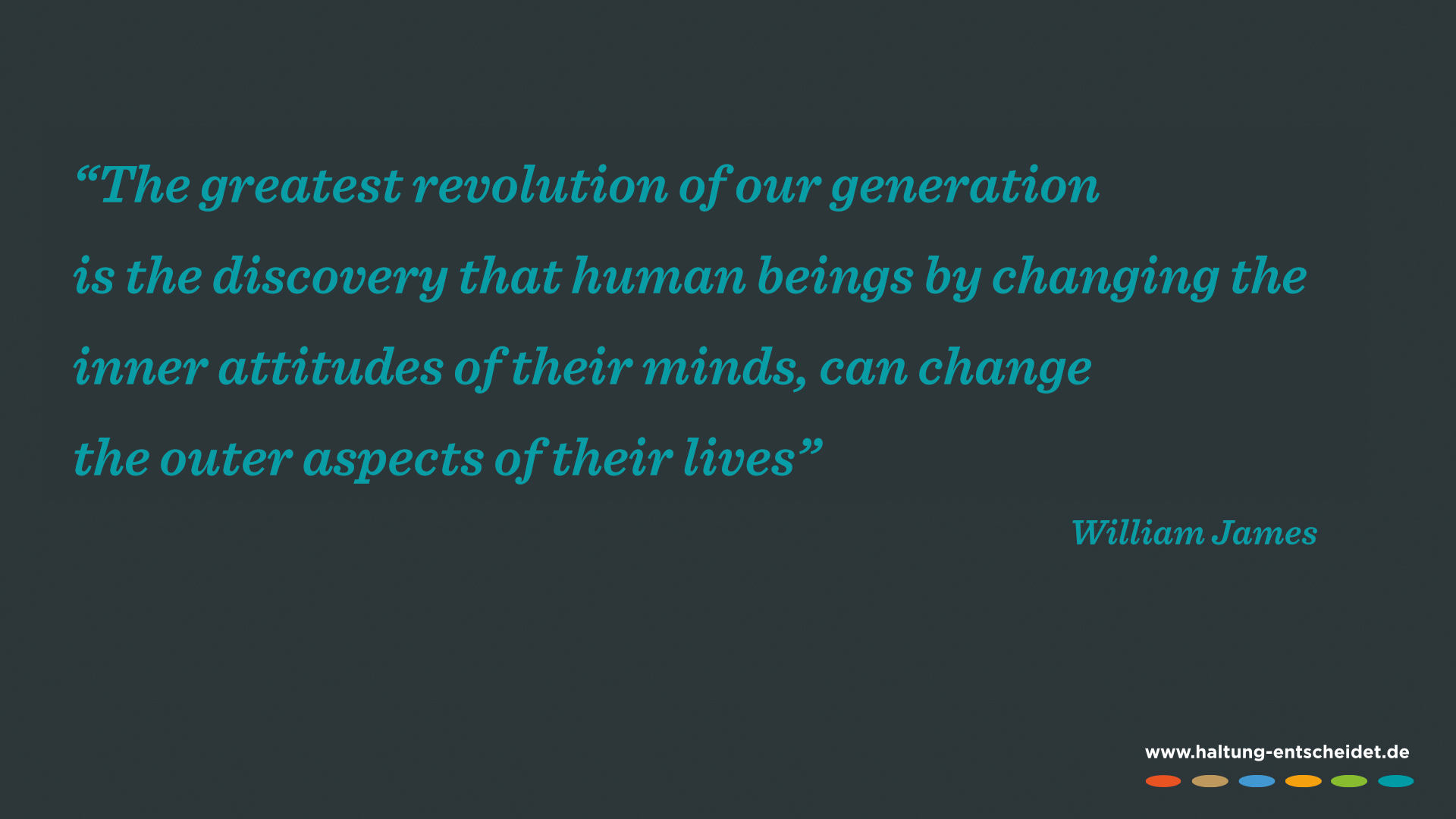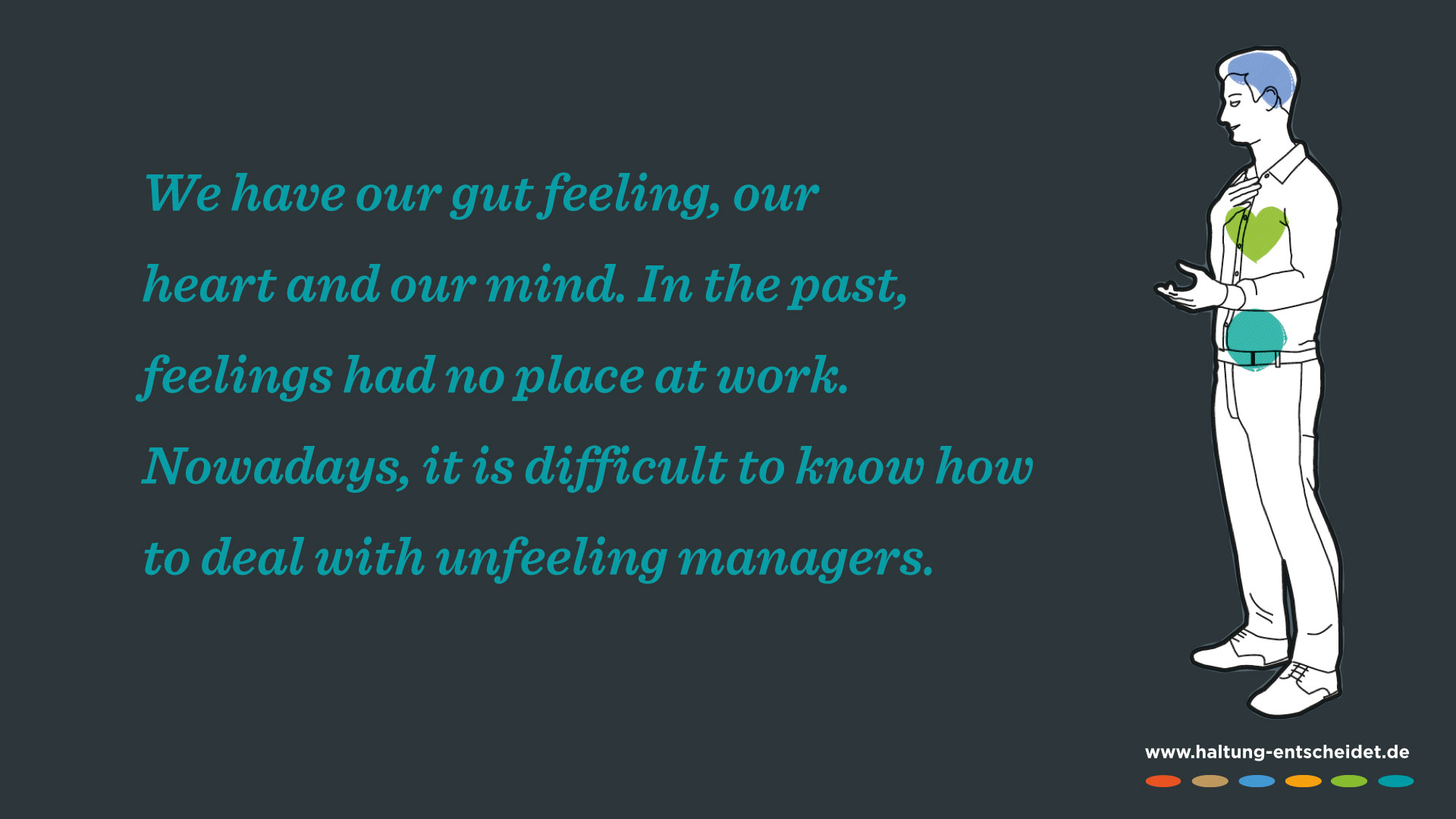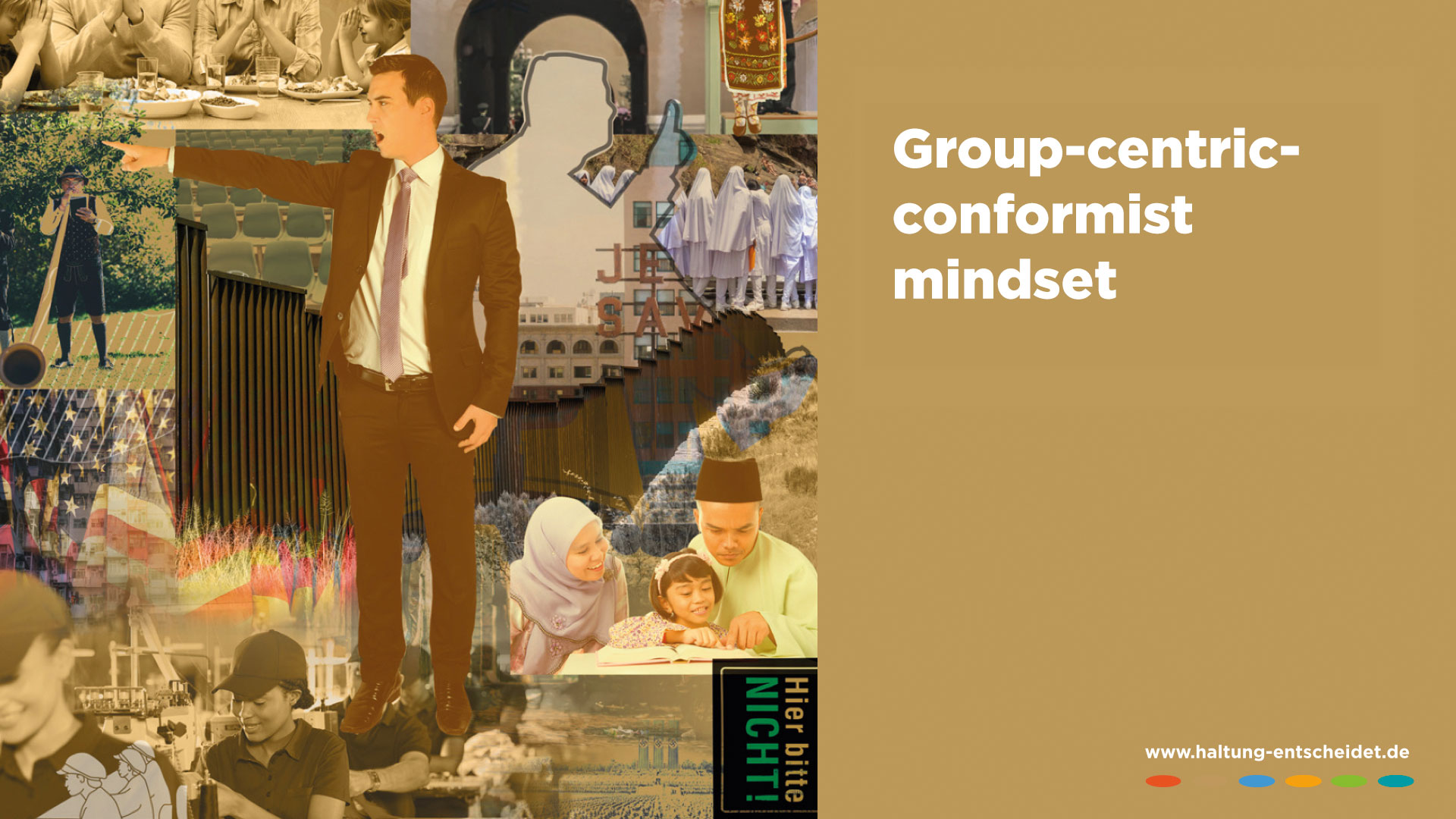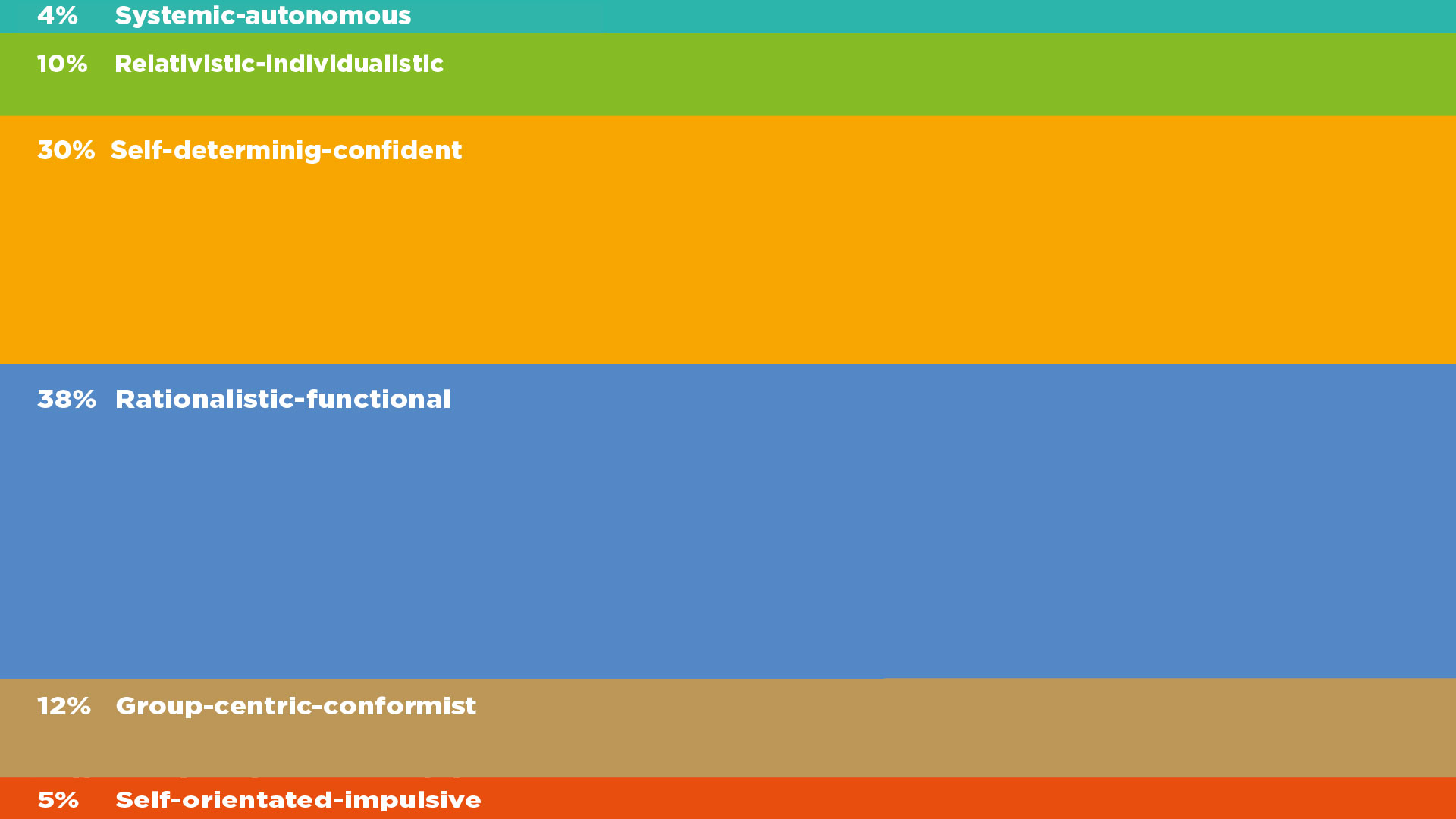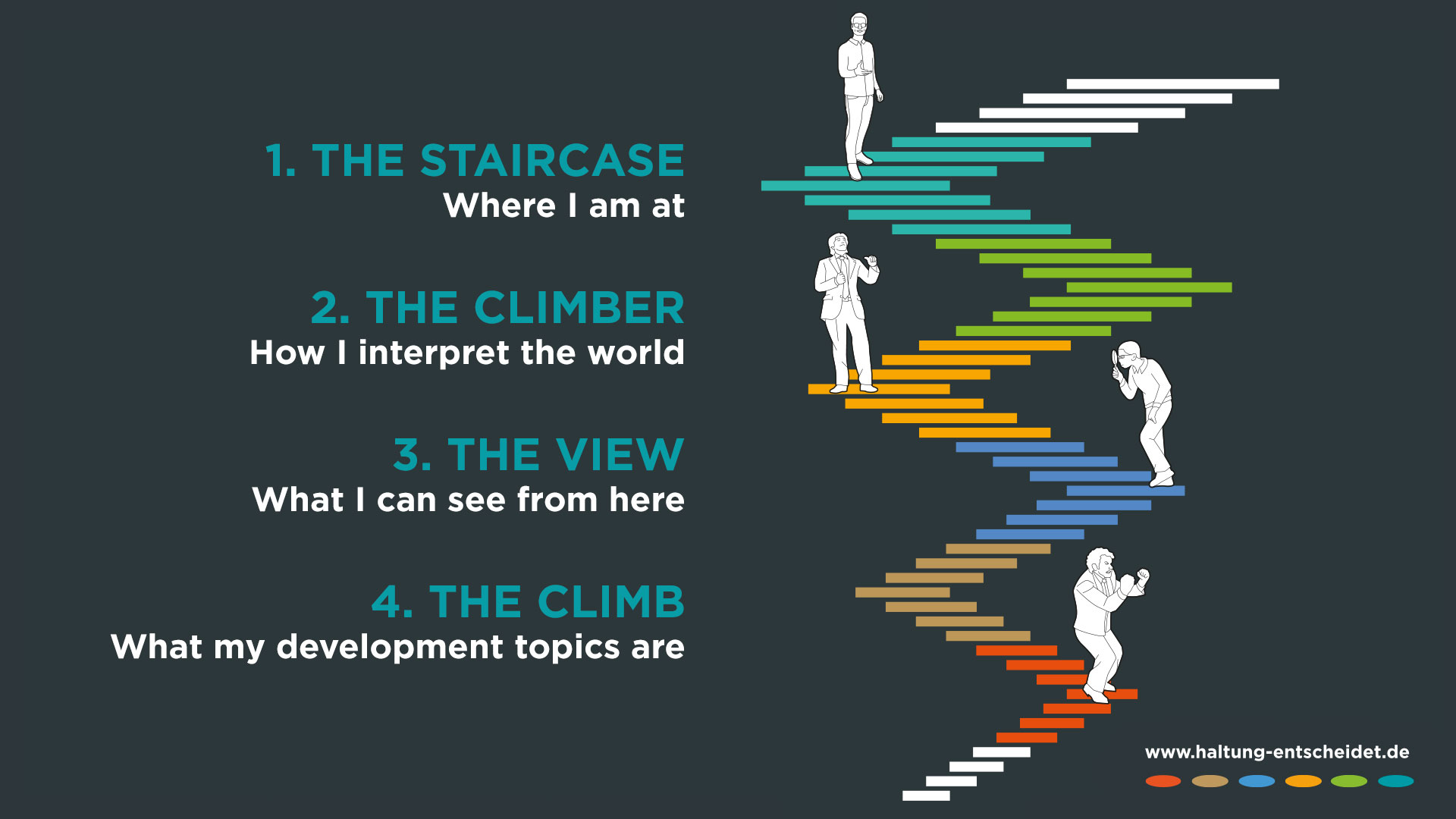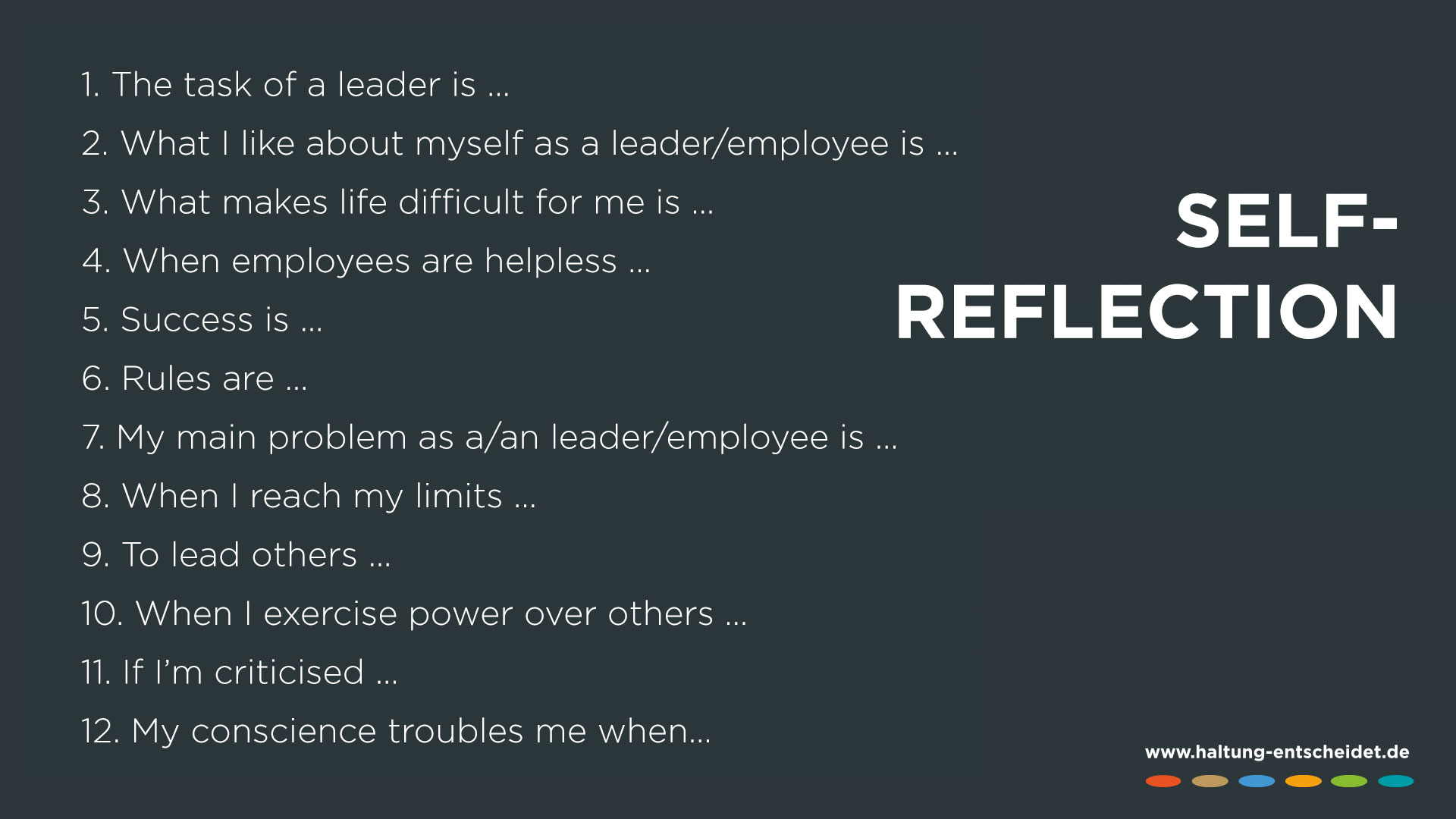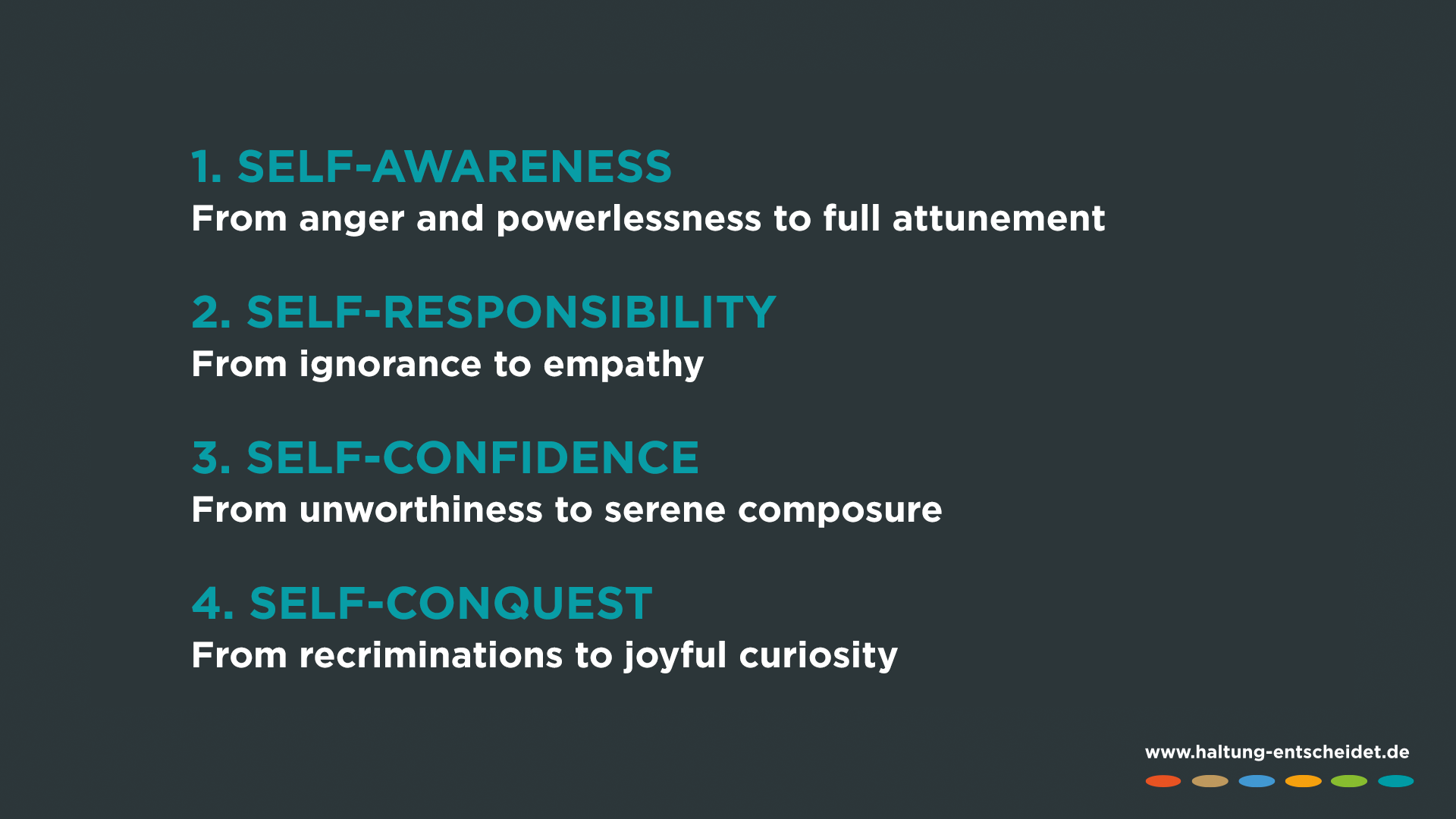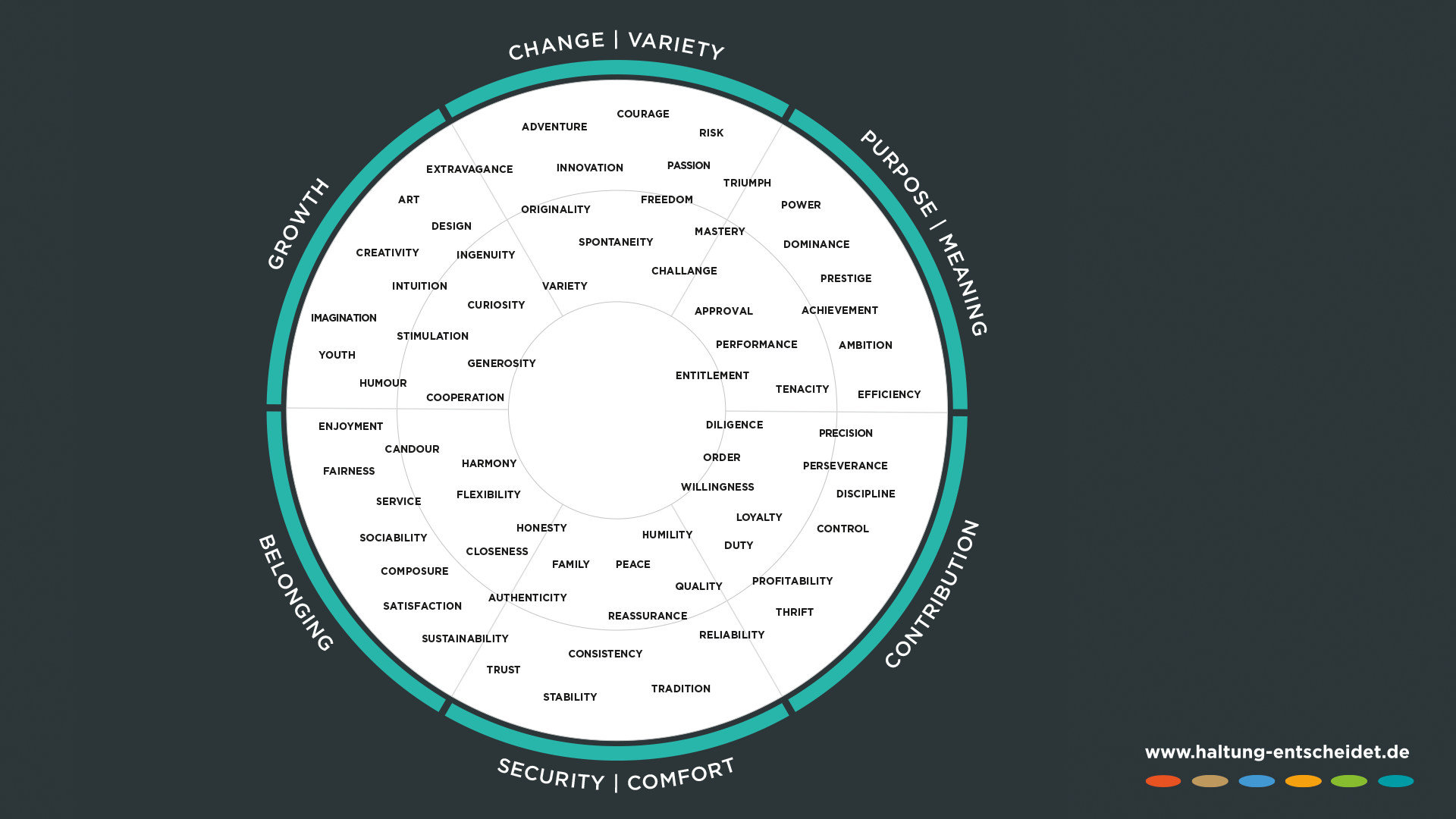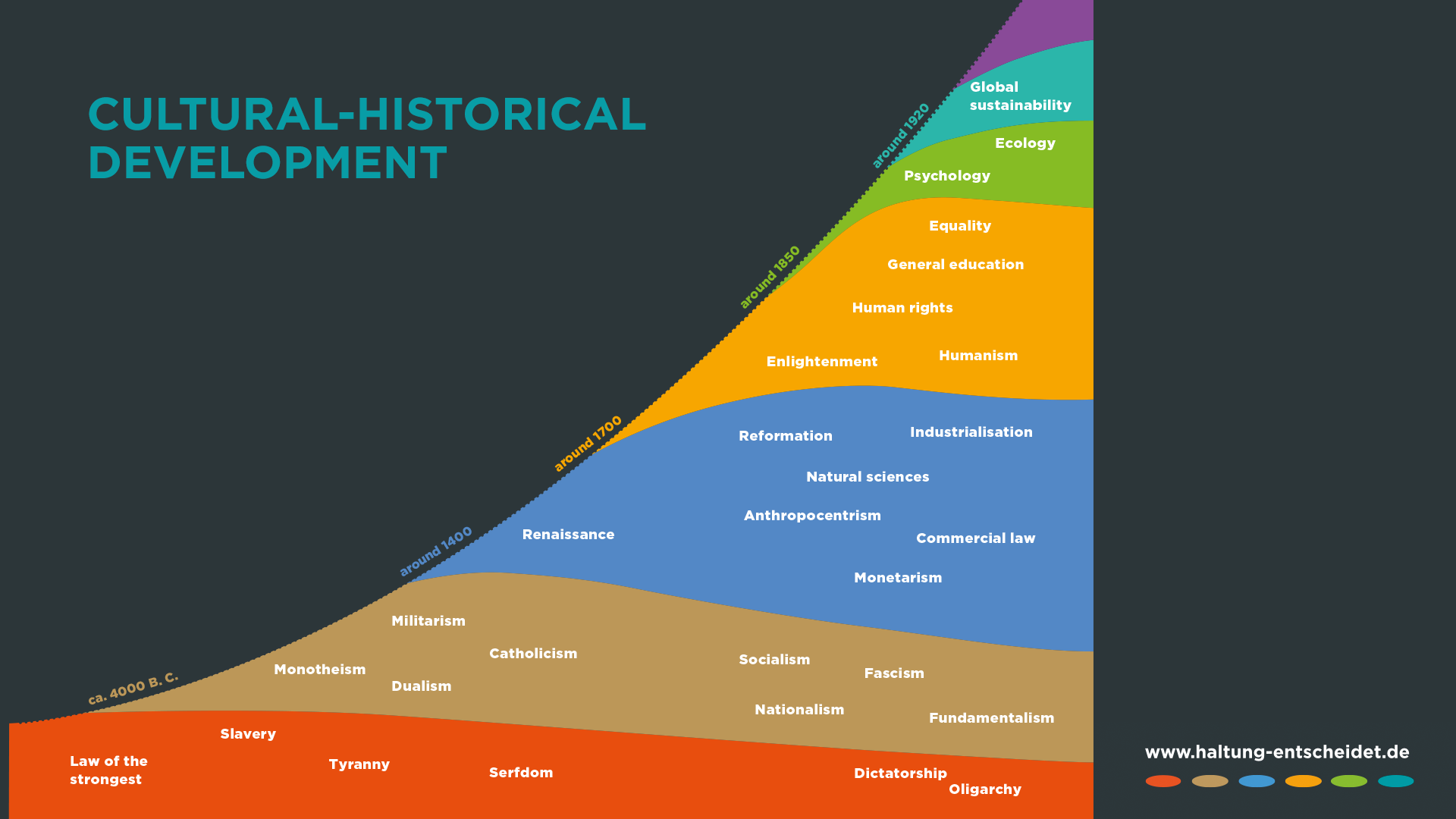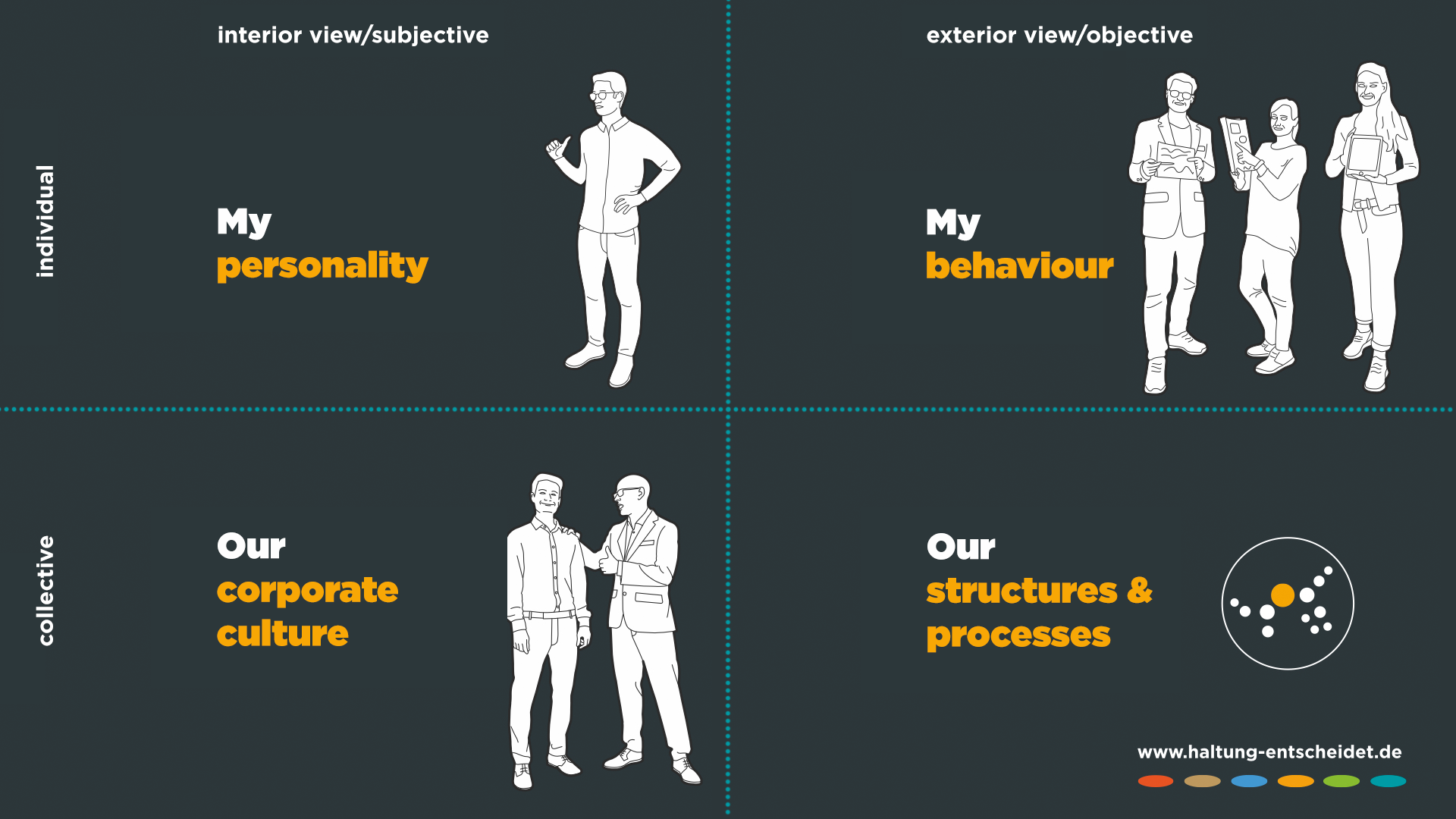E-book – 24.90 €
Order now as an e-book >>
(free download for members of bookboon, 8.99 € for non-members)
A sneak peek of what “MINDSET MATTERS” is all about.
INTRODUCTION
When the Berlin Wall came down we suddenly realised that it is possible for us to change and reinterpret our reality. How was this development possible?
In the past, research tended to be confined to examining human development from birth through to adulthood. However, we now know that the development process can continue throughout our lives. The six mindset model challenges us to take an honest look at ourselves and have the courage to see things in a new and different light. This means we have to be fundamentally willing to see ourselves as agents in a process of maturation.
Chapter 01 //
LEADERSHIP AND CULTURE IN TIMES OF CHANGE
How do we cope when faced with uncertainty? We acquire a kind of tunnel vision and revert to old ways of thinking. Obsolete mindsets start to reemerge. Older people often fall back into old patterns of thought and behaviour and try to solve new problems with outdated solutions. They draw on cultural realities that no longer exist and which were supposedly much better.
Pessimism is not a cognitive achievement. It is an inhibiting state of mind which arises without inner effort. An optimal organisation is like an additional leader. It is a guiding force, helping teams and individuals reach their potential.
Chapter 02 //
LEADING MEANS COMMUNICATING
We think if we just throw in a few talks with a bit of design thinking on top and use agile working methods like Kanban or SCRUM then we’ll get more innovation and agility out of our organisation. But people can’t be reprogrammed; they can’t be updated by pressing a button. Employees are becoming more and more self-determined, more empowered, and don’t just want to serve a function. A working climate that cultivates genuine dialogue and not monologue, where people actually listen to each other instead of arguing, is also much more efficient.
Cynicism is the disease of the clever and one of the major obstacles facing leadership. Co-creative leadership challenges managers to let go of judgments, cynicism and fear. It is impossible to develop a more agile corporate culture without engaging in leadership self-development. It is imperative for managers to reflect on their thought processes and to evolve accordingly. Self-evaluation releases the energy and potential to lead with a future focus. A lack of personal entrepreneurial and managerial development hinders the growth of businesses and organisations.
Chapter 03 //
EVOLUTIONARY MODELS FOR LEADERSHIP AND CORPORATE CULTURE
There is a danger with labelling and evaluating in multi-stage models which prompts justified criticism. However, there is general consensus that personality development occurs between birth and adulthood.
It is also evident that we do not all follow this development path equally fast and equally far. No one mindset is better or worse than the other. Anyone can be kind and loving, no matter how simple or complex their construction of reality is. The mindsets describe the nature and scope of the different options available to us. Even when we have arrived at a new stage in our interpretation of reality, the old patterns of explanation remain active within us. Acquiring the skills competences of a new mindset is a process that takes time. We find it easier to see and understand something we are familiar with and have already experienced than something which lies ahead as growth potential. Loevinger’s constructivist approach distinguishes by looking from the inside. It’s not about the external description of our behaviour, but how we create our reality through our inner mindset. Ego development is one of the few theories that can scientifically measure the maturity of our own development. Even if we possess a later stage of maturity in our repertoire, this does not mean that we always use it. People can be highly empathic yet behave like childish tyrants in other roles.
The lower can’t see the higher. Therefore, it’s important to create emotional reference experiences on a new level of more mature togetherness.
Chapter 04 //
THE 6 MINDSET MODEL
Mindset has to do with maturity. The development of our inner mindset is shaped by our upbringing, our social environment, the culture in which we live and our own desire for self-development. We all start from scratch and gradually expand our skill set. Each mindset has its own choices. These can be simple and dualistic or more nuanced and differentiated. The greater our awareness, the wider our scope for action. The mindsets available to us depend on our resources and the skills we have been able to acquire and experience. New mindsets change our perception of reality. Change is always an inner journey.
As we mature, we go through three phases: childhood, socialisation and self-development. Self-development requires us to continually hit the pause button and check-in on ourselves.
4.1 THE SELF-ORIENTATED-IMPULSIVE MINDSET
In the self-orientated-impulsive mindset we are deeply caught up in ourselves and our needs. Reflective thinking and the understanding of longer periods of time are not yet possible in this mindset. We reject feedback and remain stuck in stereotypical ways of thinking that concentrate more on the concrete than the abstract. We are not yet able to grasp or control our own emotional experience. We lack the ability to empathise with others. Our ways of thinking are simplistic; we blame others for our problems. We tend to be defensive because we lack a sense of security and genuine self-awareness. We go through this learning phase between the ages of about two to five, when we start to say “I”.
4.2 THE GROUP-CENTRIC-CONFORMIST MINDSET
In the group-centric-conformist mindset we learn about the rules and norms that govern our social environment. Our identity is strongly defined through belonging to a “we” rather than through our own individuality. Obedience and submission are predominant in this mindset. This induces strong feelings of guilt when we fail to comply with conventional norms. We are under great pressure to conform, which allows us to avoid conflict. We prefer to steer clear of conflict and keep our mouths shut. Our own feelings and inner lives are still intangible. We accept criticism if it’s based on principles that are established externally.
4.3 THE RATIONALISTIC-FUNCTIONAL MINDSET
The rationalistic-functional mindset is the next stage of competence building and marks the emergence of what psychologists call the ego. Nascent self-awareness allows us to understand our actions, emotions, habits and behaviour. We can now see different perspectives and become less judgmental. The desire is born to express our own opinions and to be different. We develop our own views about what is right and wrong. We are not interested in lengthy debates. We still see ourselves as governed by external exigencies, which we believe we must meet in order to function. In our own development we usually go through this mindset at the onset of puberty.
4.4 THE SELF-DETERMINING-CONFIDENT MINDSET
In the self-determining-confident mindset we develop our own values and ideas. We are strongly focussed on goals and are driven by the desire for self-improvement. The confidence gained from this extended set of skills nurtures a much richer inner life which accepts complexity and respects individual differences. We still tend not to see own blind spots or subjectivity. The “ego” is at its peak in this mindset. It corresponds to the late teenage stage where knowledge and competence abound but empathy is still not fully developed.
4.5 THE RELATIVISTIC-INDIVIDUALISTIC MINDSET
The relativistic-individualistic mindset reveals to us how our perceptions colour our view of the world. We begin to put things into perspective and question our own and others’ points of view. We are able to empathise and recognise contradictions in ourselves and the outside world that we once chose to ignore out of ignorance or cynicism. We see that people are shaped by their own fundamental traits, culture and life history. We learn to take account of this in our communications. In this mindset we become more aware of our emotional inner life, which we now see as an additional and relevant resource for shaping our views.
4.6 THE SYSTEMIC-AUTONOMOUS MINDSET
With the systemic-autonomous mindset our competencies expand to include the ability to take a multi-perspective approach. We are now open to creative ways of tackling conflict and can also deal with ambiguity. We respect the individuality and autonomy of our interlocutor and are prepared to take full responsibility for ourselves and our thoughts, feelings and actions. We can recognise our thoughts and feelings as subjective and have more collaborative options for action. An awareness construct manifests itself and we start to understand that we are permanently constructing ourselves and the world around us anew.
Chapter 05 //
6 MINDSETS AT A GLANCE
The development of each new mindset is a form of consciousness expansion – and a liberation. These steps to liberation include establishing rules and standards, using your own critical mind, self-empowerment and finding your own goals, developing empathy, and being able to see yourself as a subjective, autonomous part of a connected world. Our mindset shifts. In the course of a single day we experience ourselves in different mindsets. If we are not aware of ourselves, our inner mindset will often be activated by external stimuli. Instead of just sticking to one mindset, with growing maturity we can choose between them. When we are aware of the different mindsets within us, we can shift between them and control our behaviour for the better. Each mindset has its own view of the world. We speak the same language, but we interpret the words differently. Depending on which mindset best corresponds to our way of thinking, we give the words a different meaning. Our own inner assumptions and beliefs keep us from changing our mindset.
Chapter 06 //
WORLDVIEW AND LEADERSHIP
Earlier mindsets tend to draw on the past and the familiar to find solutions. The ability to see new opportunities is much more time-consuming and requires energy and focused attention. At present it is in the business world that this new understanding of leadership is being tried and tested. The integration of different cultures and mindsets has long been a reality in many companies, effectively making them cultural pioneers. They prove that peaceful global cooperation is fundamentally possible, even if there still are many weaknesses and injustices. New Work is more than just a new form of collaboration. New Work is inner work and therefore only possible through our personal development and the expansion of our own mindset. Much of interpersonal conflict resolution involves shifting to a more mature inner mindset.
Chapter 07 //
THE EVOLUTIONARY WAY OF THINKING
Many companies complain about a shortage of suitable applicants but don’t seem to realise that this has a lot to do with their own attractiveness and positioning. There is a growing need to strategically develop leadership and corporate culture. In the future, our corporate culture will be one of the most important unique selling points. It is an essential investment good that cannot be bought. A mindset is not a permanent possession, but something that we practice again and again and actively take on. As we mature, we can deal more competently with new mindsets and have better control of ourselves. Expanding our consciousness isn’t about eliminating our existing subpersonalities or pretending that they don’t exist, but about integrating them. When we look to the future and less familiar mindsets, we can see our potential. If we learn not to act from the earlier mindsets, we nurture the mature mindsets. This is inner work. If we acknowledge fear, it becomes courage. Anger becomes the power to act. Powerlessness becomes self-empowerment. Hardly anyone has learned leadership. If we see ourselves as travellers on a journey of evolution, it becomes much easier to recognise our own limitations and to free ourselves from them.
Chapter 08 //
TO SEE YOUR OWN MINDSET
We don’t usually have much control over external influences, but we can manage the way we deal with these influences through the mindset we adopt. If we don’t experience the more complex mindsets and are out of touch with our feelings, we will find it harder to see the bigger picture. People also differ in the extent to which they can use the mindsets. The journey is the same for everybody, but we are all at different stages of this learning path. If populist polarising rhetoric or media reports scare the life out of us, we tend to think in self-orientated-impulsive “buzz” words or group-centric-conformist soundbites. We act beneath our potential and leave our intellectual wisdom and ability to differentiate out in the cold. In these moments we are far removed from empathy and inner wisdom. Those who think their view of the world is the be all and end all and see no point in exploring their own subjectivity will find the concept of ego development and the six mindset model meaningless.
Complete the following 12 sentence stems and find out what your own habitual mindsets are.
- 1. The task of a leader is …
- 2. What I like about myself as a leader/employee is …
- 3. What makes life difficult for me is …
- 4. When employees are helpless …
- 5. Success is …
- 6. Rules are …
- 7. My main problem as a/an leader/employee is …
- 8. When I reach my limits …
- 9. To lead others …
- 10. When I exercise power over others …
- 11. If I’m criticised …
- 12. My conscience troubles me when…
All answers are correct. There are no wrong answers.
Chapter 09 //
MINDSET AND SELF-DEVELOPMENT
Inner space can be configured. We don’t have to remain stuck in old ways of thinking. We can unlock new spaces of experience within ourselves if we want to. The model is not trying to put the squeeze on readers to change their own mindsets. We can lead a “happy” life in every mindset, and for some people the idea of inner change is not really appealing. We sometimes need to maintain certain inconvenient behavioural patterns in order to avoid pain. In a new mindset we achieve a new quality of life. Not “more of the same old same old”, but something entirely new. And because it is new, we cannot even begin to imagine it. Then again, with hindsight, we find it hard to fathom how unwitting and oblivious we were before. It is up to us alone whether we choose to evolve or not. Self-development or maturation is often confused with the kind of self-improvement that is driven by feelings of inadequacy. Many employees have no desire to do this, and rightly so. Self-development is a personal decision where, starting with ourselves, we begin to take responsibility. It’s difficult for us to think outside the box, because we believe we are the box. We look out into the world from our space of consciousness through our cultural window, and think we are standing outside. The development of mindsets has something reconciliatory about it. It shows us that people are not just like this or that; they are still like this or that.
The four areas of self-development are:
1. Self-awareness – from anger and powerlessness to full attunement
2. Self-responsibility – from ignorance to empathy
3. Self-confidence – from unworthiness to serene composure
4. Self-conquest – from recriminations to joyful curiosity
Chapter 10 /
“MINDSET AND TEAM DEVELOPMENT
If the team culture is fuelled by complaints, accusations, error focus, unrealistic expectations, numbers and intrigue, then we will not create space for open dialogue and development. It’s astonishing how managers like to complain about their employees yet are not prepared to change themselves, or don’t realise that they themselves are part of the problem. This might seem obvious, but in reality it isn’t. If we can’t yet see the whole picture and believe that our own mindset is the only one that matters, we will not be able to manage all our employees equally well. In small companies you can choose your employees to fit the mindset. In large companies, at least the managers should have the maturity and a common understanding of the desired team culture. An important word from positive developmental psychology is “still”. If we see that department XY operates in the group-centric-conformist mindset and does everything by the book, we should resist the temptation to disparage them for it. That’s not how they are, it’s how they “still” are – at least at work. Irrespective of their mindset, every individual is “right” as a person. Everyone has the opportunity to change their mindset and to broaden the way they interpret the world and interpret it meaningfully for themselves. Whether and in which time frame they want to mature is entirely up to them. It is crucial for the management team to keep an eye on the big picture and see where everybody stands in terms of focus – at both individual and team level. In this sense, achieving a new mindset is not a goal, but a result of development. When structures prevent people from living out their mindsets, these people will sooner or later leave the organisation. Unfortunately, these are often the very people most needed for change to happen. Staffing decisions at management level are cultural decisions, because managers are culture bearers. A common understanding of values and leadership can be established with the help of the six mindset model in workshops with as many employees as possible.
Chapter 11 //
MINDSET AND VALUES DEVELOPMENT
Strategic recruiting begins by knowing your own values. An organisation should be more intelligent than the people who work in it. It should provide clarity about shared values and the desired mindset. Success has many currencies. We can measure it in money, time, happiness, satisfaction, security, balance, love, insight, health, self-development, openness, fairness, fulfilment, well-being and in many other ways. When there is no shared understanding, leadership depends on the moods and competencies of individuals. We attract the right employees when we know where we stand, where we want to go, and what kind of person fits in with us. The personality and mindset of future employees are more important than skills and competencies. We cannot buy culture, but we can buy staff and equipment. We have to create our own corporate culture. Values communication helps us identify and implement common values.
Chapter 12 //
CULTURAL-HISTORICAL DEVELOPMENT
The development we see in ourselves and in organisations is also reflected in the cultural-historical development of the Western world. The six mindset model offers a broader view of cultures and their current stage of development. Each new cultural mindset complements the previous ones. It does not replace them, but expands them. Crucial watersheds in our shifting reality constructs on a societal level were the emergence of book religions, the Renaissance and the Enlightenment, and the advent of psychology and systemic thinking. At each of these phases our ability to give meaning to the outer world grew. We have learnt to deal more appropriately with our mental and emotional health, inner impulses and perceptions. A revealing mirror of the prevailing social mindset is the respective legal system of a society.
Chapter 13 //
MINDSETS IN RECENT GERMAN HISTORY
The model helps us understand shifts in mindset at societal level and in the world of work in Germany. After the enforced conformity of the Nazi era and the conservative and utilitarian 1950s and 1960s, an ensuing spirit of optimism coincided with new debate on self-determination, women’s rights and environmental protection that led to the creation of approaches for a sustainable, fairer world. Today this finds expression in global cooperation and the search for a common “we”. The development path also shows what new concepts of leadership ideas should take into account when tackling complex global challenges. The systemic-autonomous mindset embraces both responsibility and creative skill. International global climate agreements are an attempt to create mitigation systems that do justice to the complexity of the problem. However, national egoisms, the denial of scientific findings and looking at short-term benefits and profits are still acting as impediments. Solutions at this level are shaped by multilateral dialogue, compromise, balance and the inclusion of multiple dimensions. It calls for an iterative testing procedure that involves constant feedback and improvement. Earlier mindsets have it easier here. They can lead us into believing they have found solutions, but in reality nothing has been achieved at all. What use is constant growth if it no longer benefits the well-being of the population?
Chapter 14 //
THE FOUR DEVELOPMENT PERSPECTIVES
A well-balanced organisation allows us to develop our personalities and adapt structures so that the culture we strive for can unfold and the desired behaviour can be achieved. The organisation then becomes an additional leader. For this to succeed, we need to look at all four dimensions: personality, behaviour, culture and structure. This “integral approach” enables us to target the development of all four dimensions and the underlying mindsets. If one area is forgotten, it becomes an obstacle to the development of the other areas.
Chapter 15 //
EPILOGUE
Leadership needs to embrace three qualities if it is not to hamper development: presence, courage and empathy.
Presence is needed so that we can act in the present in the first place, and observe and recognise our mindset. We have to wake up as often as possible for a “second time” in order to see through our automatisms and habitual mindsets.
Courage helps us to enter spaces of experience that are outside our comfort zone. The best way to learn a new mindset is to experience it.
Empathy helps us to use our emotional wisdom to recognise new opportunities. It elicits the compassion for ourselves and others that we need to find the equanimity and patience that development demands.
If we have presence, courage and empathy, we can choose our
mindset sooner. The space between stimulus and response becomes wider and then – we are on our way to becoming free and collaborative human beings.
The new book “MINDSET MATTERS”
Some reviews of the book “Haltung entscheidet” (Mindset Matters)
“The book’s special strength lies in its ability to illustrate complex interrelationships in a vivid way. With great clarity, the six mindset model demonstrates the potential we have as human beings and, on a personal level, what is worth striving for in the team as well as in the organisation”.
Jens Corssen
Certified psychologist and coach for Germany’s top executives
“I am deeply convinced that modern organisations are characterised by a distinct focus on purpose and trust-based self-organisation. The book shows very vividly how leadership and an organisation can develop towards a higher level of maturity. I will certainly browse through this book over and over again, because it is extremely multi-faceted and has opened many new avenues of thought”.
Uwe Rotermund
Entrepreneur and corporate culture consultant, 3-time winner of “Great Place to Work“
“The book has broadened my view of myself and others in a surprising way. I now understand better why some people have completely irrational mindsets and can better classify and reflect on my own inner mindsets. It therefore holds great practical as well as theoretical value. The multiple examples from Martin Permantier’s wealth of experience have also opened up a lot of new perspectives for me.”
Dipl.-Psych.
Executive Coach, Systemic Organisational Support
“A nuanced, innovative book on the subject of team and organisational development, written in a practical, humorous and entertaining way and with many vivid examples – highly recommendable”.
Gisela Sefranek
Executive Coach, Ego Development Coach
“A book that shows leadership in a different light and that I personally could have done with 12 years ago. When I first took on a leadership role, I did it differently to expectations. Although everything went well and my colleagues and I enjoyed our work and the results were good, I felt that I wasn’t really doing a proper job. After reading “Mindset Matters” I realise now that what I was doing back then was really good. A must read for all managers for whom leadership also means self-development”.
Markus Kocherscheidt
Intercultural coach and trainer
“You describe exactly what I observe and deal with every day! The book helps me to see where I stand.”
Pia Maria Holle
Wirtschaft 4.0: Arbeit und Bildung im Wandel

